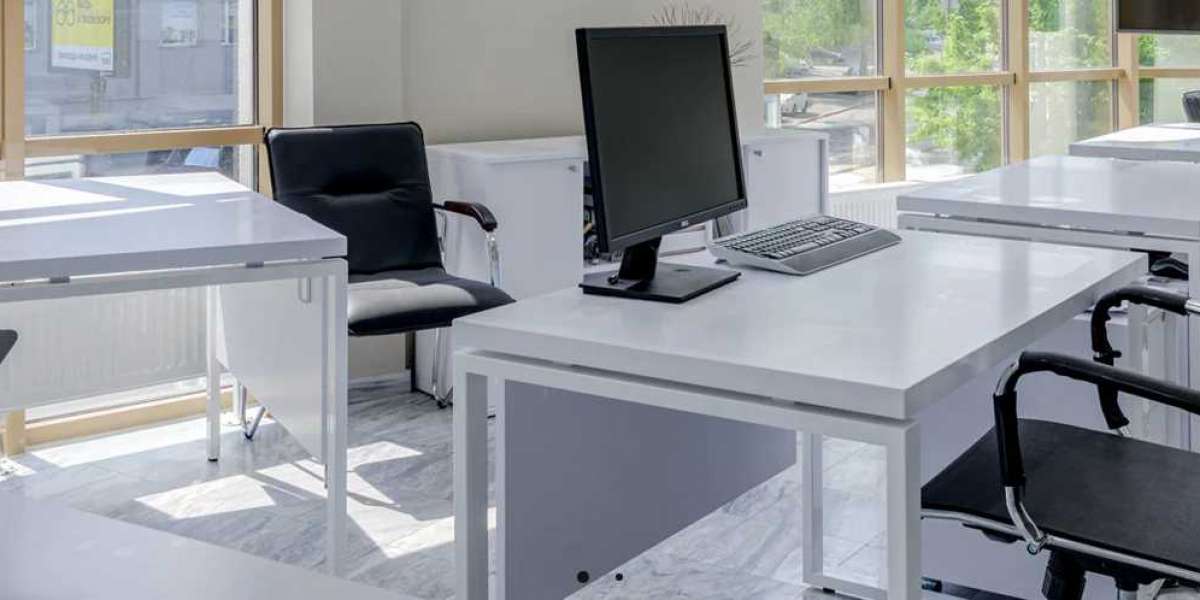Choosing the perfect office chair is crucial for maintaining comfort and support throughout long workdays. The right chair can help prevent back pain, reduce fatigue, and improve productivity. Here’s a guide to selecting the best office chair for your needs:
1. Prioritize Ergonomics
- Adjustable Seat Height: The chair should allow you to adjust the seat height so that your feet rest flat on the floor, with your knees at a 90-degree angle. This helps maintain proper posture and reduces strain on your legs.
- Lumbar Support: Look for a chair with built-in lumbar support to support the natural curve of your lower back. Adjustable lumbar support allows you to customize the fit to your spine, helping prevent back pain.
- Seat Depth and Width: The seat should be deep and wide enough to support your thighs without pressing against the back of your knees. An adjustable seat depth can accommodate different body sizes and sitting preferences.
2. Consider the Backrest
- Adjustable Backrest: The backrest should be adjustable in both height and angle to provide optimal support for your back. It should support the natural curve of your spine, especially the lower back.
- Reclining Function: A chair with a reclining backrest allows you to lean back and take pressure off your spine. Look for a chair that offers a range of recline options and a locking mechanism to keep the backrest in place.
3. Look for Quality Materials
- Breathable Fabric: The chair’s upholstery should be made of breathable fabric or mesh to prevent sweating and discomfort during long periods of sitting. Mesh backs are particularly good at keeping you cool.
- Cushioning: The seat and backrest should be cushioned with high-density foam or similar material that provides both comfort and support. The cushioning should be firm enough to maintain its shape over time but not so hard that it’s uncomfortable.
4. Check the Armrests
- Adjustable Armrests: Armrests should be adjustable in height, width, and angle to support your arms at a comfortable height. Your arms should rest on the armrests with your shoulders relaxed, elbows at a 90-degree angle.
- Padded Armrests: Look for chairs with padded armrests to provide additional comfort, especially if you spend a lot of time typing or using a mouse.
5. Assess Mobility and Stability
- Swivel Base: A chair with a swivel base allows you to move freely and reach different areas of your workspace without straining. This feature is especially important if your job requires multitasking or using multiple devices.
- Casters: Choose a chair with high-quality casters that allow smooth movement across different floor types. If your office has a carpet, look for chairs with casters designed for carpeted surfaces, or consider adding a chair mat for easier mobility.
6. Evaluate Adjustability
- Seat Tilt: A seat with tilt adjustment allows you to change the angle of the seat to match your preferred sitting posture. A forward tilt can help relieve pressure on your thighs, while a backward tilt can support a more relaxed position.
- Tilt Tension Control: Look for a chair with tilt tension control, which allows you to adjust the resistance of the backrest when reclining. This feature lets you customize the recline to your weight and preference, providing optimal support.
7. Consider Aesthetic and Style
- Design: While functionality is key, the chair should also fit your office’s aesthetic. Consider a chair that complements the overall design of your workspace, whether it’s modern, traditional, or minimalist.
- Color and Finish: Choose a chair color and finish that match your office decor. Neutral colors like black, gray, or brown are versatile, while bolder colors can add a pop of personality to your workspace.
8. Test Before You Buy
- Try Before You Buy: If possible, try out the chair in person before making a purchase. Sit in it for at least 15-20 minutes to get a sense of how it feels. Pay attention to how well it supports your back, legs, and arms.
- Return Policy: If you’re buying online or can’t test the chair beforehand, make sure the retailer has a good return policy. This way, you can return or exchange the chair if it doesn’t meet your comfort and support needs.
9. Consider Your Budget
- Set a Budget: Office chairs come in a wide range of prices. Set a budget that reflects the importance of comfort and support, but be willing to invest a little more for a high-quality chair that will last.
- Cost vs. Value: While it might be tempting to go for a cheaper option, remember that a good office chair is an investment in your health and productivity. A well-made chair can last for years, making it worth the initial cost.
10. Look for Warranties and Support
- Warranty Coverage: Check the warranty offered by the manufacturer. A longer warranty typically indicates higher quality and durability. Look for warranties that cover the chair’s frame, upholstery, and moving parts.
- Customer Support: Ensure that the manufacturer or retailer offers good customer support in case you have questions or issues with the chair. Read reviews or ask for recommendations to gauge the reliability of their service.
Conclusion
Choosing the perfect office chair requires careful consideration of ergonomics, adjustability, materials, and style. By focusing on these factors, you can find a chair that provides the comfort and support you need for a productive and healthy work environment. Remember that investing in a high-quality office chair is an investment in your well-being, so take the time to choose wisely.







